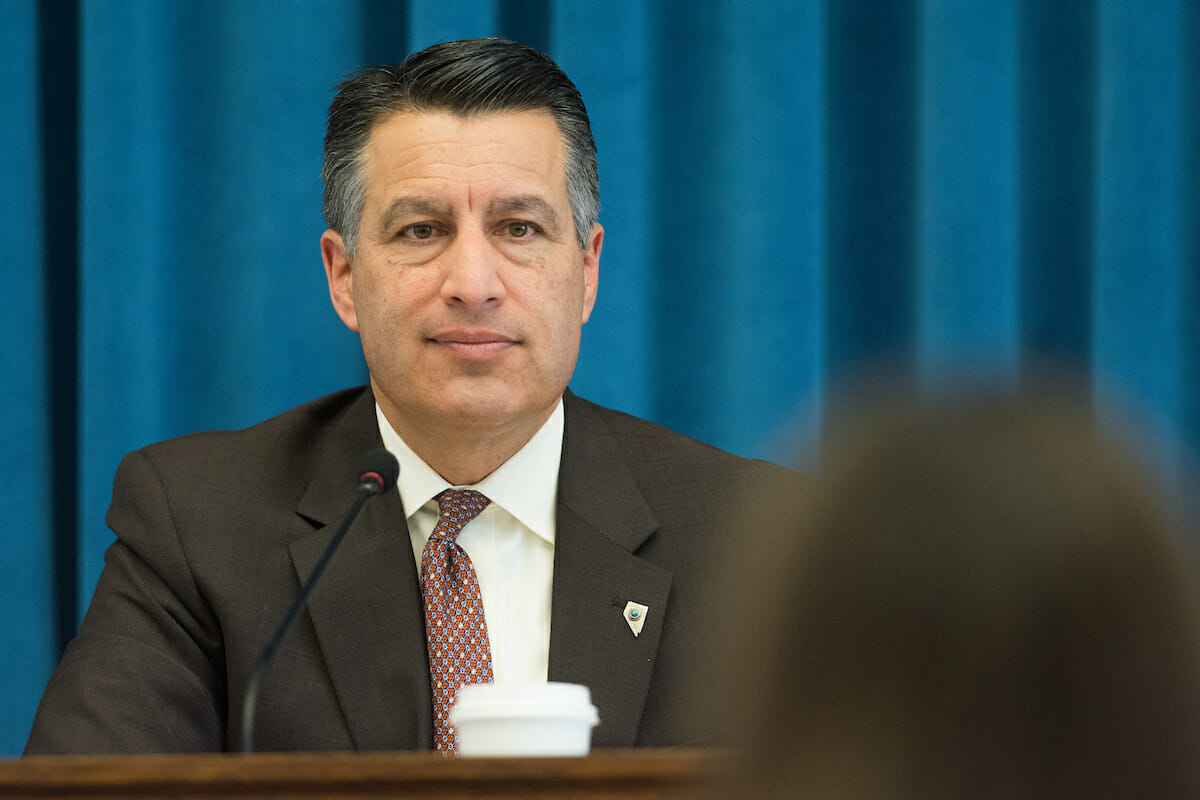Sandoval, other governors send bipartisan plan to fix the nation's health-care system to Congress

Gov. Brian Sandoval and a bipartisan group of seven other governors outlined a plan to stabilize the nation’s health insurance market in a letter to Congressional leadership on Wednesday, a little less than a week before the House and Senate return from their August recess.
The governors, in a seven-page letter, urged Congress to take immediate action to stabilize markets across the country, implement “responsible reforms” to preserve coverage and keep costs in check and foster a partnership between states and the federal government to improve the health care-system as a whole. Specifically, they asked Congress to appropriate federal funding for payments that subsidize the costs of insurance for low- and middle-income individuals through the end of the next calendar year, keep in place the individual mandate and encourage competition in counties with only one insurance carrier on the exchange.
Ohio Gov. John Kasich, Colorado Gov. John Hickenlooper, Pennsylvania Gov. Tom Wolf, Alaska Gov. Bill Walker, Virginia Gov. Terry McAuliffe, Louisiana Gov. John Bel Edwards and Montana Gov. Steve Bullock joined Sandoval in signing the letter. Sandoval and Kasich are the only two Republicans among the group, and Walker is an independent.
For months, the governors have been working quietly behind the scenes as an informal, bipartisan group to block a repeal of the Affordable Care Act and push for the reforms they believe are needed to stabilize the nation’s health-care system. Hickenlooper and Kasich agreed in February to join forces on health care, a team quickly joined by Sandoval and several other moderate governors.
The governors, in varying numbers, have written to Congressional leadership on several occasions throughout the summer, urging them to take action on health care and warning them of the potential consequences of passing legislation to repeal and replace the Affordable Care Act. In July, Sandoval and nine other governors sent a letter to Senate leadership declaring their opposition to the proposed “skinny repeal” of the Affordable Care Act.
The National Governors Association, which Sandoval chairs, also urged the Trump administration in August to continue to fund the so-called “cost-sharing reductions” that go to insurers to reduce the amount that low- and middle-income individuals pay for their deductibles, copays and coinsurance. The governors made the same plea in the Wednesday letter, noting that the nonpartisan Congressional Budget Office has estimated that not making the payments would drive premiums up by 20 to 25 percent and would increase the federal deficit by $194 billion over the next decade.
The letter also urges Congress to fund the cost-sharing reductions through at least 2019 to guarantee that all individuals are able to afford the cost of insurance, signal stability in the market to insurers and increase competition. It also suggests that Congress create a temporary stability program that would help reduce premiums and reduce losses for providing coverage to the tune of $15 billion annually.
The governors said that while addressing the rising costs of health care throughout the system is important, the “volatility of the individual market” is the most immediate concern, which they blamed on “continuing uncertainty about the direction of federal policy.” The uncertainty has led to higher premiums, reduced competition and fewer choices for consumers, they said.
In Nevada, uncertainty with the future of health care at the federal level caused Anthem to pull out of the state, briefly leaving 14 rural counties with no insurance option on the state’s exchange. SilverSummit, a subsidiary of Centene, announced in August that they would step up to cover the rural, barren counties.
But the governors also asked Congress to increase competition in counties only served by one insurance carrier by exempting insurers from the federal health insurance tax on plans offered in those counties and to allow residents in those counties to buy into the Federal Employee Benefit Program, which would give them access to the same health-care system as federal workers.
The group acknowledged that the current individual mandate is “unpopular” but called it “perhaps the most important incentive for healthy people to enroll in coverage” and said that Congress should keep it intact until it can devise a better alternative.
They also suggested several other options that states can pursue to help stabilize their own health-care systems including encouraging younger, healthier people to enroll in insurance through education, shortening grace periods for the non-payment of premiums and reduce costs through coverage redesign.
“Federal action to stabilize markets is only the first step. Governors have been eager to pursue reforms that strengthen health insurance markets in our states, but uncertainty about the ACA and the status of federal subsidies to support the individual market have made it difficult to proceed,” the governors wrote in the letter. “Working alongside states, the federal government must make reforms that will preserve and expand gains in coverage, while controlling costs for consumers.”
The governors asked Congress and federal agencies to work with states to give them more flexibility by not preempting state authority to regulate health insurance markets and supporting a state’s ability to waive certain provisions of the Affordable Care Act. States are not allowed to waive requirements to cover pre-existing conditions, lifetime coverage limits or coverage for adult depends until age 26.
“If there is a clear signal to consumers and carriers that the individual market is viable, then additional state-based reforms will be more manageable and we can succeed in preserving recent coverage gains and controlling costs,” the governors wrote. “As we move beyond the immediate crisis, the real challenge over time will be to confront the underlying cost drivers of health-care spending, and reset incentives to reward better care for individuals, better health for populations, and lower cost.”
Bipartisan Governors Blueprint to Congress - Aug. 30, 2017 by Megan Messerly on Scribd
